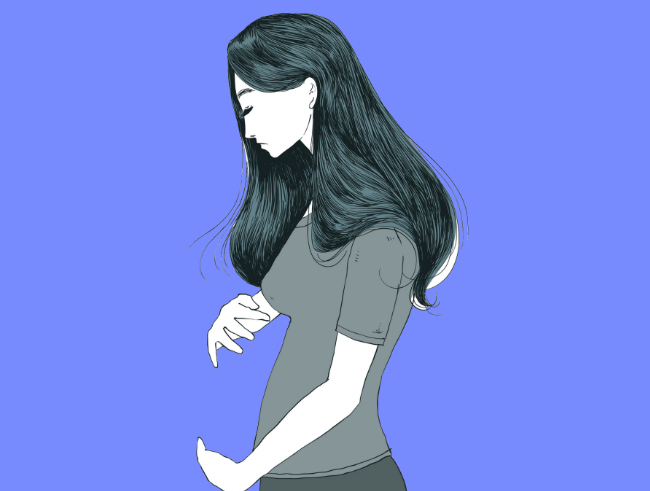
Having children is the desire of almost every couple. But not every couple is gifted to get children easily. A couple that is having unprotected intercourse at least 3 times a week, and has not been able to conceive after one year has a problem and should seek help.
The help available is determined by the type of problem they have. The major problems can be grouped into 4 main categories: Poor quality or insufficient sperm production, Anovulation, Blocked tubes and Problems with the endometrial cavity.
Anovulation
This is the commonest problem for women: the inability to release the egg to meet the sperm to form a baby. It may be related to a condition called Polycystic Ovarian Syndrome (PCOS). It could also be due to a high prolactin level (responsible for breast milk production). And yes, a woman can be having her menses even though she is not ovulating.
A woman is born with all the eggs she will have in her life; so if she is 45 years, then so are her eggs. The quality of the eggs available diminishes with age, making it difficult to fertilise to produce a baby. Also, the lady may not be ovulating due to a diminished ovarian reserve. I recently saw a 36-year old woman whose ovarian reserve was like that of a 50-year old woman. She had stopped menstruating and her hormone profile was that of a menopausal woman. Premature ovarian failure can occur at very young ages so you should not assume that your fertility is assured. The youngest case I have seen was only 29 years old when her ovaries failed and became menopausal. Thankfully she already had one child.
For those who are not ovulating, the solution is to help them ovulate with a variety of medications. For those who cannot ovulate despite medication and other interventions, a donor egg is an option to consider. In such a situation, a younger woman (the donor) would be given medication to produce several eggs which would be harvested and combined with the husband’s sperm and the resulting baby transferred into the recipient’s womb. She then carries the child to term and delivers her baby.
People are initially reluctant to use donors because they want their child to have their own genes. With time however, they come to realise that, using a donor egg is their only option available and so they embrace it and have their child and joy unspeakable.
Blocked tubes
This occurs when the fallopian tubes are blocked by infection or inflammation. The result is that the sperm cannot meet the egg. The patency of the tubes are assessed by a series of procedures, namely Hysterosalpingogram (using a dye and an X-ray saline); Hysterosonogram (using saline and an ultrasound); HyCoSy (using a special fluid with bubbles); Ultrasound Laparoscopy (putting a camera in the belly button to see the tubes); and Transvaginal Hydrolaparoscopy (putting a camera through the vagina to see the tubes). The only effective solution is In vitro fertilization where the eggs are taken from the woman and combined with the sperm and the resulting baby is inserted into the womb.
Damaged endometrial cavity
This can be caused by infections, Dilation and Curettage (D and C’s), development problems, adenomyosis, foreign bodies, uterine fibroid and polyps. Polyps unfortunately are often not seen on ultrasound and are often hidden for a long time. They act like a family planning agent thus preventing pregnancy.
Two years ago, I met a woman who had been trying to get pregnant for several years. I discovered during an ultrasound that she had a remnant of a baby’s bone in her uterus which was causing her infertility and offered to take it out. After a year’s hiatus, we took it out by operative hysteroscopy (entering the uterus through the vagina and cervix with a camera and surgical instruments to remove polyps, fibroids, scar tissue, foreign bodies, etc. without cutting the body). She promptly got pregnant afterwards with no further intervention.
Uterine fibroids in the endometrial cavity may cause heavy bleeding or painful periods and also act like a family planning method preventing pregnancy. Ladies who may have had D and C’s may have suffered endometrial damage causing a fertile land to become like gravel. These problems need to be corrected with Hysteroscopic Surgery before they can conceive or get relief from their symptoms. For women whose uterus cannot carry a pregnancy successfully despite all attempts, surrogacy is an option.
Male infertility
This accounts for approximately half of all infertility cases. The man may have a low sperm count, inactive sperm or no sperm at all in the semen, abnormal looking sperm, or a high count of inflammatory cells retarding sperm activity.
Solutions include medications to correct the abnormality and Intrauterine Insemination for mildly impaired sperm. For those with more severe sperm disorders, In vitro Fertilization and Intracytoplasmic Sperm Injection are done. In this process, the sperm is produced and the good ones are taken out and injected into the egg. One sperm per egg. The successful embryos are transferred into the woman.
If that fails or the problem is not amenable to the previously mentioned solutions, donor sperm is also an option.
There are multiple options available for an infertile couple to have a child; for instance, egg freezing for those who are not ready to have a child now and adoption. The younger you are, the better your options. It is important that the decision to seek treatment is taken as early as possible so your dreams can come true, just the way you want it.
Written by:
Dr. Padi Ayertey MB,ChB. FWACS
Obstetrician Gynecologist
Resolve Medical Services
Accra
Source: Glitz Africa Magazine Issue 19








